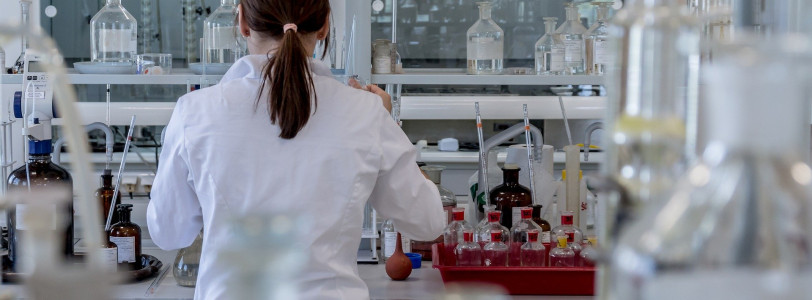A centralised and comprehensive testing system was always going to be a key component in the fight to stamp out Covid-19. Unfortunately, we were perhaps slow off the mark in rolling the process out, and when we did it was undermined by logistical errors.
However, it’s impossible to deny that the process has become both easier and quicker as the months have gone on, with tests more readily available and results coming back far quicker. We wanted to just quickly reflect on that development, quickly capturing individual experiences of testing at differing points of the pandemic. I hope you’ll agree that the changes are encouraging.
Have you had to take a Covid-19 test? What was your experience? Why not let us know in the comments.
Dan Hodgkiss
My testing experience came somewhere in the middle of the first lockdown. In my case, I was more a medical chauffeur than a patient, driving my partner to get tested. It was nonetheless, utterly weird.
It began with some instructions to drive onto an obscure industrial estate, the kind you imagine would be a good spot to torture a rival gang member if the need arose. The space we drove to was empty except for a large hanger which was surrounded by threatening looking men in army uniforms armed to the teeth. I'm not sure what these weapons were for, presumably so I could be suitably dispatched if I threatened to cough on somebody?
It was more than a little intimidating, like the beginning of an alien invasion movie/zombie outbreak. In some ways it wasn't far off, I suppose.
My partner then received a phone call telling her we had to drive up alongside some slightly friendlier looking people in lab coats and open the window just a crack, so that they could throw the test into the car. We were instructed (with a note of fear) not to raise our arms to catch it, as this might waft viral particles into their faces.
I remember it being a sweltering hot day, because we weren't allowed to open our windows after that, except to dump the sample. We were told to park up around the side, whereby my partner had to shove a long cotton‐bud up her nose, as far as it could go, far as I could tell. This was then popped in a packet with her details on, which we had to dump in what was presumably the most dangerous post‐box for miles. We drove away once the appropriate quantity of respectful manly nods was given, and promptly let some new oxygen into the car. We got a text the next day with the results, negative!
Bea Kerry
The year is 2020, and Britain was in the midst of its first lockdown. We pull into an empty warehouse car park, anxious and gripping the sanitiser bottle so tightly our knuckles turned white. Where once it seemed empty, we could now see masked army personnel everywhere, staring menacingly. All the online forms, QR codes and isolating had come down to this one moment, the moment that could change everything... Joking! Kind of…
Getting a Covid-19 test for the first time was definitely a very strange experience. We had suddenly been catapulted from the safety of our tiny barn conversion into what felt like some post-apocalyptic industrial estate, where a zombie dragging itself around the corner would not have been out of place.
There was also a lot of army personnel all around the warehouse, which when you come from the middle of nowhere where seeing more than 1 person in a day makes it ‘busy’, is very unnerving!
Having got past the intimidating setting, and tackled the whole having a phone call with someone approximately 1 metre from you on the other side of the car window, the test itself wasn’t so bad. It’s pretty uncomfortable, and if you have sensory issues then it will definitely pose more of a challenge, but if you think about its purpose for ‘the greater good’ it is worthwhile.
Then going in to work in a care home environment and getting tested weekly, you never actually get used to someone roughly shoving a swab up your nose. It’s an oddly intimate and very uncomfortable experience, compounded by the fact that the nurse testing us was doing it so quickly it made me doubtful the test was even being performed correctly. Several inconclusive tests others received didn’t help assuage my worries either, but thankfully we didn’t have another outbreak during my time there, although anxiety levels of both staff and residents was still high when I left (but that’s a whole other story!).
So overall, the tests are uncomfortable, a bit anxiety-inducing and a very strange experience, but 5/10 minutes of discomfort in exchange for keeping strangers and loved ones safe? I’m in.
Ellen Taylor
I feel very privileged not only having been tested for free through my university so conveniently, but also having had such a stress-free experience. I turned up at 3pm on December the 3rd and was out ten minutes later. There was no queue, and the staff were friendly and helpful. I signed up with my university on my phone using a QR code before I was taken through to the testing booths to have a lateral flow test.
I was asked to disinfect my hands and blow my nose before a swab and sick bowl were passed to me through the glass screen. The test itself was more independent than I had expected. On the wall there was a mirror and a set of instructions detailing the test procedure. This consisted of rubbing my tonsils with the swab 3 times which was quite unpleasant, but the worst part was sticking the swab up my nose for ten very long seconds. Then it was over, and I had my (negative) result by text within half an hour.
Upon reflection, I found the test difficult to take, and if I am being honest, I don’t know if I did it correctly. This makes me doubt my result somewhat, coupled with the latest statistic to surface on lateral flow testing which estimates that up to 50% of cases may have been missed.
Tayo
My testing experience was pretty simple at my uni, each week we collected a testing kit and random people in our flat had to take them, usually different people every week. It was initially a bit strange, but we got used to it over time and the instructions were pretty clear. If there was a positive test in the pooled sample (which never happened for our flat) then the flat would self-isolate and each get individual tests. So in general it was pretty smooth and easy.
Due to this regular testing, people could feel a little safer in the ambiguous and ever-changing ‘hybrid’ teaching that we got – even though there were still a significant number of cases. Now the obvious thing to point out here is that very few universities have both the lab space and the finances to enable this kind of program. It’s important to question why and how students were moved en masse into accommodation with people from across the country – especially when this comprehensive testing was only available at richer universities.
In general, regular self-test kits like this are easy to apply and do seem to be the way to go in situations where coming together in person is insisted on, but as pointed out earlier, there are real questions of accuracy.









0 Comments